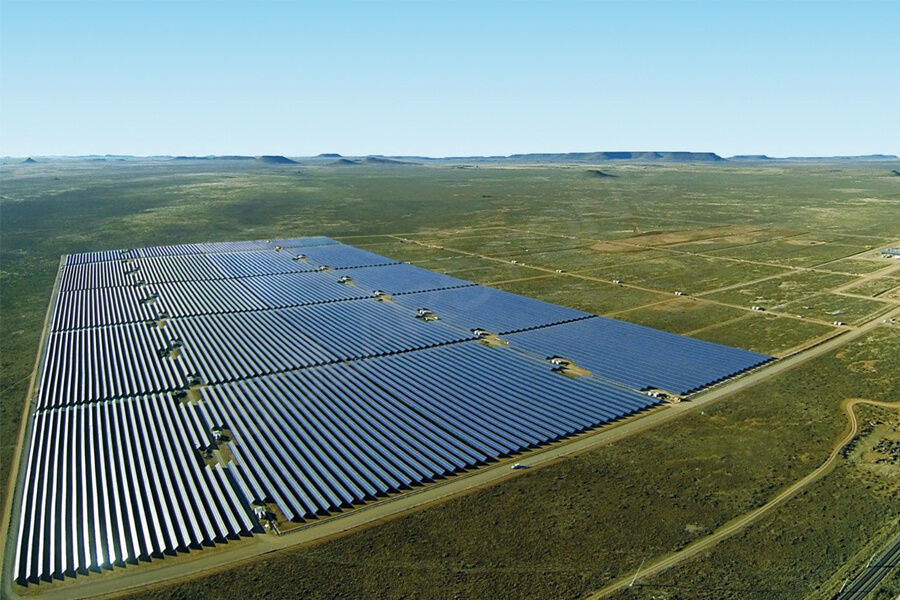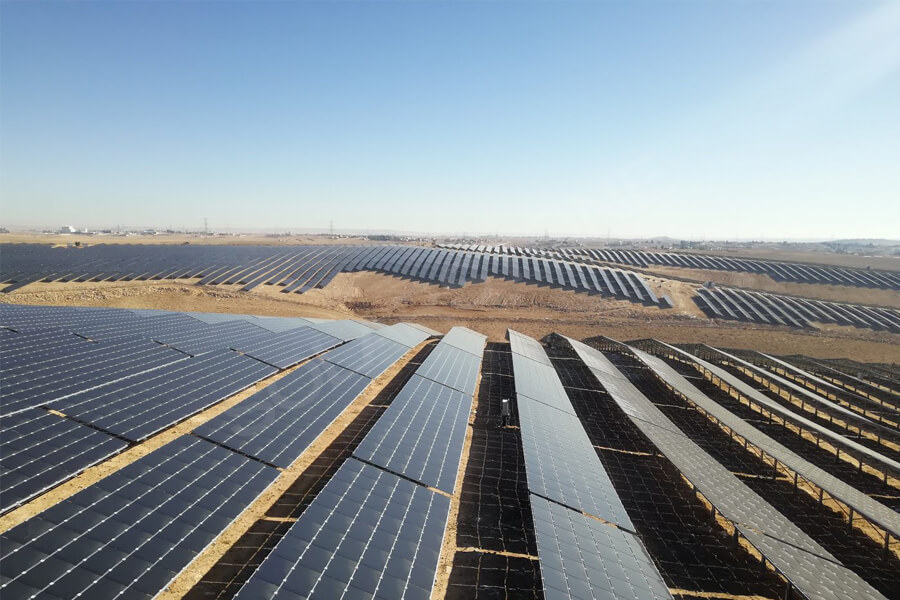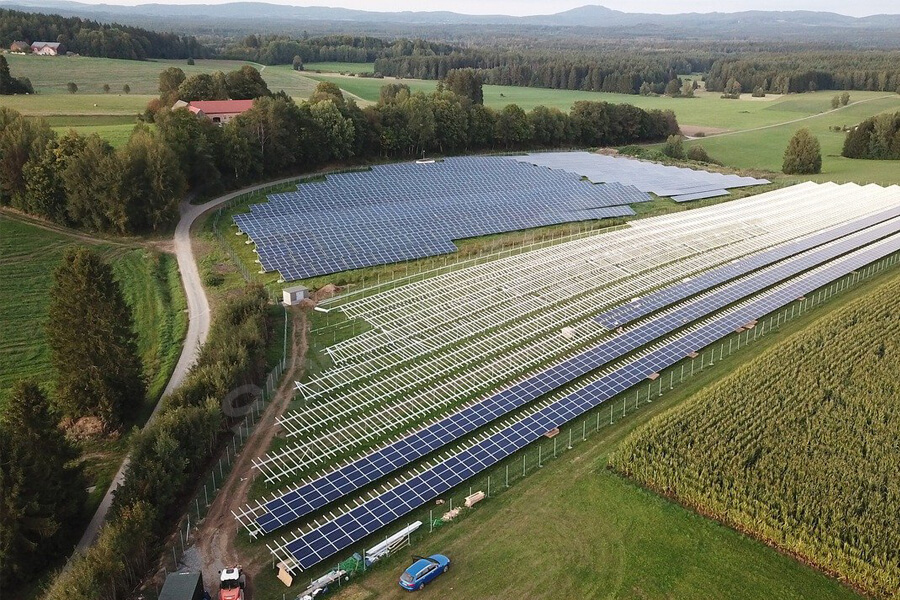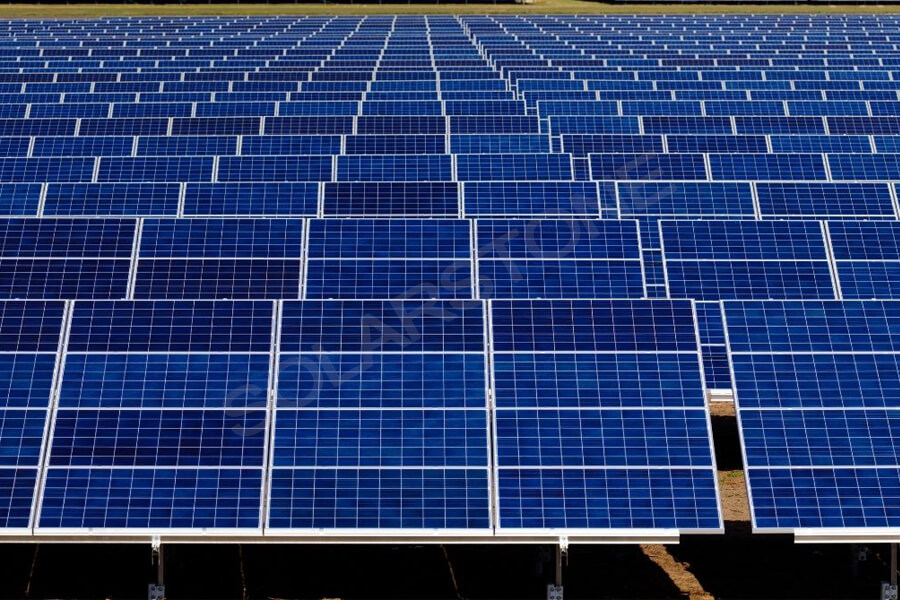With the increasing popularity of clean energy such as photovoltaic power generation, more and more enterprises have installed photovoltaic power stations. While enjoying various benefits brought by photovoltaic power generation, the power station owner cannot ignore the maintenance and cleaning of the power station at home.
Proper maintenance can not only ensure the power generation of the power station but also ensure sufficient service life. So, how to do a good job in the later maintenance of the photovoltaic power station?
1. Cleaning of pollutants
Generally, the service life of photovoltaic modules is more than 25 years. Regularly clean the bird droppings, leaves, and other shelters on the photovoltaic module panel to ensure that the photovoltaic modules can maximize the exposure to sunlight.
If you are usually clean and have high requirements for power generation effect, you can also clean the photovoltaic modules yourself, but you should pay attention to the following points.
(1) Generally, the cleaning of photovoltaic modules is carried out in the morning or late afternoon. When cleaning, it is forbidden to stand less than 1m away from the edge of the roof.
(2) Before cleaning the PV module, check whether there is any record of abnormal power output in the monitoring record, analyze whether it may cause electric leakage, and check whether the connecting wire and relevant components of the PV module are damaged and adhered. Before cleaning, test the aluminum frame, support, and tempered glass surface of the PV module with a test pen. To eliminate potential leakage hazards and ensure personal safety.
(3) Personnel cleaning photovoltaic modules shall wear corresponding work clothes and hats to avoid personal scratch and injury. Hooks and belts on clothes or tools shall be prohibited. Thread ends and other parts that are easy to cause binding.
(4) It is strictly prohibited to clean photovoltaic modules under meteorological conditions of strong wind, heavy rain, thunderstorm, or heavy snow. Avoid washing in winter, and do not wash with cold water when the PV module is very hot.
(5) It is forbidden to use hard and sharp tools or corrosive solvents and alkaline organic solvents to wipe PV modules, and it is forbidden to spray cleaning water onto module junction boxes, cable trays, combiner boxes, and other equipment.
Users are not recommended to clean by themselves without knowing the relevant professional cleaning knowledge. It is better to invite professional PV cleaning personnel to clean and repair, so as to better ensure that PV modules will not be damaged during cleaning.
2. Maintenance of PV modules and supports
(1) The surface of PV modules shall be kept clean. PV modules shall be wiped with a dry or wet soft and clean cloth. It is strictly prohibited to wipe PV modules with corrosive solvents or hard objects. The PV module shall be cleaned when the irradiance is lower than 200W / ㎡, and the liquid with a large temperature difference with the PV module shall not be used to clean the PV module.
(2) Live warning signs on PV modules shall not be lost.
(3) PV modules shall be inspected regularly. If the following problems are found, the PV modules shall be adjusted or replaced immediately.
- There are glass crushing, backplate scorching, and obvious color changes in photovoltaic modules;
- There are bubbles in the photovoltaic module that form a communication channel with the edge of the module or any circuit;
- The junction box of the photovoltaic module is deformed, twisted, cracked or burned, and the terminal cannot be well contacted.
(4) For photovoltaic modules with metal frame, the frame and support shall be well combined, the contact resistance between them shall not be greater than 4 Ω, and the frame must be firmly grounded.
(5) Use DC Clamp ammeter to measure the input current of each PV module string connected to the same DC combiner box under the condition that the solar radiation intensity is basically the same, and the deviation shall not exceed 5%.
3. Maintenance of combiner box
(1) The DC combiner box shall be free of deformation, corrosion, water leakage, and ash accumulation. The safety warning signs on the external surface of the box shall be complete without damage, and the waterproof lock on the box shall be opened and closed flexibly.
(2) Each wiring terminal in the DC combiner box shall not be loose or rusted.
(3) The specification of high voltage DC fuse in DC combiner box shall meet the design requirements.
(4) The insulation resistance of the positive pole to the ground and the negative pole to the ground of DC output bus shall be greater than 2 megohms.
(5) The DC circuit breaker equipped at the DC output bus end shall have a flexible and reliable braking function.
(6) Lightning arrester in DC combiner box shall be effective.
4. Maintenance of inverter
(1) The structure and electrical connection of the inverter shall be complete without corrosion, dust accumulation, etc. the heat dissipation environment shall be good, and there shall be no large vibration and abnormal noise during the operation of the inverter.
(2) The warning signs on the inverter shall be complete without damage.
(3) The cooling fans of modules, reactors, and transformers in the inverter shall start and stop automatically according to the temperature, and there shall be no large vibration and abnormal noise during the operation of the cooling fans. In case of any abnormality, the power shall be cut off for inspection.
(4) Disconnect the AC output side (grid side) circuit breaker once regularly, and the inverter shall immediately stop feeding to the grid.
(5) If the temperature of the DC bus capacitor in the inverter is too high or exceeds the service life, it shall be replaced in time.
5. Cable maintenance
(1) The parts of the cable in and out of the equipment shall be sealed well, and there shall be no holes with a diameter greater than 10mm, otherwise, it shall be sealed with a fireproof mud wall.
(2) The opening of the cable protection steel pipe shall be free of perforation, crack, and significant unevenness and the inner wall shall be smooth. The metal cable pipe shall be free of serious corrosion, burr, hard object, and garbage. If there is a burr, it shall be wrapped and tied with a cable jacket after filing.
(3) The stakes along the directly buried cable line shall be intact, and there shall be no excavation on the ground near the path, so as to ensure that there are no heavy objects, building materials and temporary facilities stacked on the ground along the path, and no corrosive substances are discharged, so as to ensure that the cable protection facilities on the exposed ground of the room are intact.
(4) Ensure that the cover plate of cable trench or cable well is intact, there is no ponding or sundries in the trench, the support in the trench shall be firm, rusted and loose, and the sheath and armor of armored cable shall not be seriously rusted.
(5) For multiple cables laid in parallel, check the current distribution and the temperature of the cable sheath to prevent the cable from burning the connection point due to poor contact.
6. Maintenance in extreme weather
(1) In case of a rain trip, it may be that the connector is not tight. In case of such a situation, it must be handled after the rain. Wrap the connector with insulating tape, and then observe whether it trips. If it continues to trip, it shall be reported to the maintenance center or local electricity management station.
(2) On thunderstorm days, the air switch under the meter shall be turned off to prevent damage to electrical equipment. After the thunderstorm, turn on the switch.
Warm tip: do not underestimate the cleaning and maintenance of household photovoltaic power stations. The power generation of the power station after cleaning can be increased by 5% – 30%, and the cleaning frequency can be 10 times a year or once a month.








